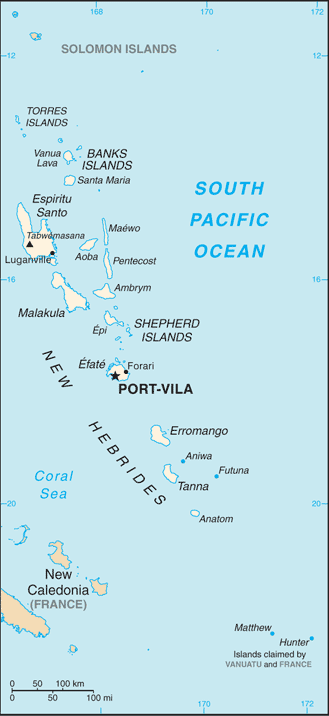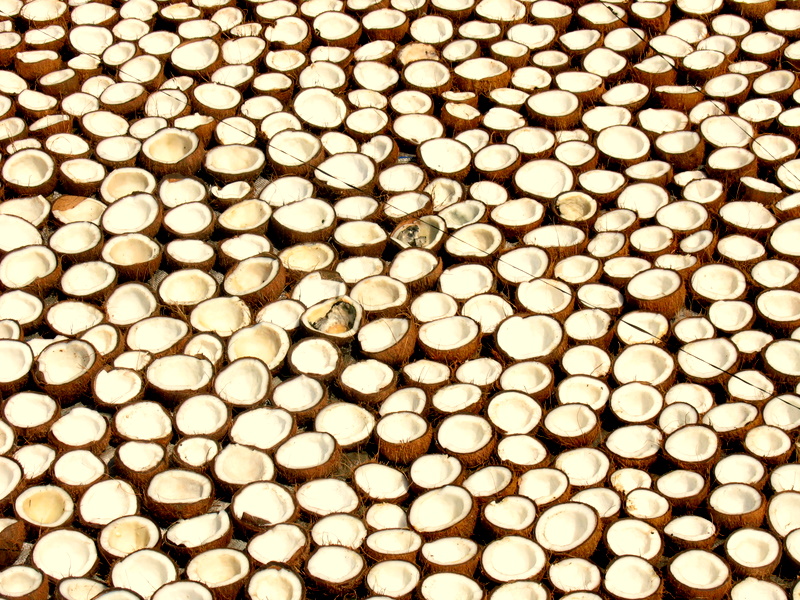|
Vanua Lava
Vanua Lava is the second largest of the Banks Islands in Torba Province, Vanuatu, after slightly larger Gaua. It is located about 120 km north-northeast of Espiritu Santo and north of Gaua. Name The name ''Vanua Lava'' comes from the Mota language, which was used as the primary language of the Melanesian Mission. Locally, the island is called ''Vōnōlav'' / in Vurës and Mwesen, ''Vunulava'' in Vera'a, and ''Vunulāv'' in Lemerig. In the immigrant language Mwotlap, it is referred to as ''Apnōlap'' (with the locative prefix ''a-''). All of these terms come from a Proto-Torres-Banks form *'' βanua laβa'' "Large Land". History Vanua Lava was first sighted by Europeans during the Spanish expedition of Pedro Fernández de Quirós from 25 to 29 April 1606. The island’s name was then charted as ''Portal de Belén'' (“Nativity scene” in Spanish). Vanua Lava was first explored by a New Zealand bishop, George Augustus Selwyn, in 1859. The sulfur deposits of ... [...More Info...] [...Related Items...] OR: [Wikipedia] [Google] [Baidu] |
Vanua Levu
Vanua Levu (pronounced ), formerly known as Sandalwood Island, is the second largest island of Fiji. Located to the north of the larger Viti Levu, the island has an area of and a population of 135,961 . Geology Fiji lies in a tectonically complex area between the Australian Plate and the Pacific Plate. The Fiji Platform lies in a zone bordered with active extension fault lines around which most of the shallow earthquakes were centred. These fault lines are the Fiji Fracture Zone (FFZ) to the north, the 176° Extension Zone (176°E EZ) to the west, and the Hunter Fracture Zone (HFZ) and Lau Ridge to the east. Mio-Pliocene sandstones and marl grade into epiclastics and andesitic volcanics of the Suva Group. The Group forms the Korotini Tableland in the middle of the island, it includes the peaks of Seseleka (), Ndelanathau (), Nararo (), Valili (), Mariko (), Mount Nasorolevu (), Ndikeva (), and Uluingala (). The Pliocene Undu Group in the northeastern portion of the ... [...More Info...] [...Related Items...] OR: [Wikipedia] [Google] [Baidu] |
Vanua
__NOTOC__ The word ''banua'' or ''vanua'' – meaning "land," "home," or "village" – occurs in several Austronesian languages. It derives from the Proto-Austronesian reconstructed form *''banua''. The word has particular significance in several countries. In Western Malayo-Polynesian languages Philippines ;Kapampangan In the Kapampangan language, ''banwa'' or ''banua'' means "sky" or "year". ;Visayan In the Hiligaynon Visayan language, ''banwa'' means "people", "nation" or "country." Malaysia and Indonesia ;Malay In the Malay language (the lingua franca of both Malaysia and Indonesia), ''benua'' means "landmass" or "continent". The word for "land" in these languages and nearby Austronesian languages — e.g., in Tana Toraja, Tana Tidung or Tanö Niha – are ''tanah'' or ''tana''. ;Banjar In the Banjar language, ''banua'' means "village" or "homeland". ;Old Javanese In the Old Javanese language, ''wanwa'' or ''wanua'' means "village", "inhabited place" or "settlement". ;Bugi ... [...More Info...] [...Related Items...] OR: [Wikipedia] [Google] [Baidu] |
Vanuatu Megapode
The Vanuatu megapode or Vanuatu scrubfowl (''Megapodius layardi'') is a species of bird in the family Megapodiidae. It was formerly known as the New Hebrides scrubfowl. It is found only in Vanuatu. Its natural habitat is subtropical or tropical moist lowland forest. The species is threatened by habitat loss and egg collecting. Taxonomy Two syntype specimens of ''Megapodius layardi'' TristramIbis, 1879, p. 194. are held in the collections of National Museums Liverpool at World Museum, with accession numbers T9758 (male adult) and T9759 (female adult). The specimens were collected in Vate Island (Efate) in July 1877 and September 1877, respectively, by Edgar Leopold Layard and came to the Liverpool national collection via Canon Henry Baker Tristram's collection which was purchased in 1896. There are three further syntypes in the bird collection at the Natural History Museum at Tring The Natural History Museum at Tring was the private museum of Lionel Walter, 2nd Baron Rothsch ... [...More Info...] [...Related Items...] OR: [Wikipedia] [Google] [Baidu] |
BirdLife International
BirdLife International is a global partnership of non-governmental organizations that strives to conserve birds and their habitats. BirdLife International's priorities include preventing extinction of bird species, identifying and safeguarding important sites for birds, maintaining and restoring key bird habitats, and empowering conservationists worldwide. It has a membership of more than 2.5 million people across 116 country partner organizations, including the Royal Society for the Protection of Birds, the Wild Bird Society of Japan, the National Audubon Society and American Bird Conservancy. BirdLife International has identified 13,000 Important Bird and Biodiversity Areas and is the official International Union for Conservation of Nature’s Red List authority for birds. As of 2015, BirdLife International has established that 1,375 bird species (13% of the total) are threatened with extinction ( critically endangered, endangered or vulnerable). BirdLife Internation ... [...More Info...] [...Related Items...] OR: [Wikipedia] [Google] [Baidu] |
Important Bird Area
An Important Bird and Biodiversity Area (IBA) is an area identified using an internationally agreed set of criteria as being globally important for the conservation of bird populations. IBA was developed and sites are identified by BirdLife International. There are over 13,000 IBAs worldwide. These sites are small enough to be entirely conserved and differ in their character, habitat or ornithological importance from the surrounding habitat. In the United States the Program is administered by the National Audubon Society. Often IBAs form part of a country's existing protected area network, and so are protected under national legislation. Legal recognition and protection of IBAs that are not within existing protected areas varies within different countries. Some countries have a National IBA Conservation Strategy, whereas in others protection is completely lacking. History In 1985, following a specific request from the European Economic Community, Birdlife International ... [...More Info...] [...Related Items...] OR: [Wikipedia] [Google] [Baidu] |
Waterfall Bay (Vanuatu)
{{geodis ...
Waterfall Bay may refer to: * Waterfall Bay, Hong Kong * Waterfall Bay, Papua New Guinea Waterfall Bay is a bay in East New Britain Province, south-eastern New Britain, Papua New Guinea Papua New Guinea (abbreviated PNG; , ; tpi, Papua Niugini; ho, Papua Niu Gini), officially the Independent State of Papua New Guinea ( ... [...More Info...] [...Related Items...] OR: [Wikipedia] [Google] [Baidu] |
Ravenga
Ravenga is a small island in Torba Province, Vanuatu, in the Pacific Ocean. The island is also known as Ranenger. Geography Ravenga lies 1.2 km off the eastern coast of Vanua Lava. The island has a diameter of about 800 meters, and is surrounded by white sandy beaches. On the northern, eastern, and southern sides of Ravenga, the reef extends offshore about 250 m, and then drops off into deep water. Name The name ''Ravenga'' comes from the Mota language, which was used as the primary language of the Melanesian Mission. It is pronounced in Mota as . In Mwotlap Mwotlap (pronounced ; formerly known as ''Motlav'') is an Oceanic language spoken by about 2,100 people in Vanuatu. The majority of speakers are found on the island of Motalava in the Banks Islands, with smaller communities in the islands of Ra ..., it is referred to as ''Ayven̄'' (with the locative prefix ''a-''). All of these terms come from a Proto-Torres-Banks form *''Raβeŋa''. References Torba Prov ... [...More Info...] [...Related Items...] OR: [Wikipedia] [Google] [Baidu] |
Port Patteson
Port Patteson is a harbour and settlement on the island of Vanua Lava in Vanuatu. It was named after John Patteson, the first Bishop of Melanesia. at '''' The capital of , Sola
Sola is a municipality and a Seaside resort in Rogaland county, Norway. It is located in the traditional district of Jæren. The administrative centre of the municipality is the village of Solakrossen. Other villag ...
[...More Info...] [...Related Items...] OR: [Wikipedia] [Google] [Baidu] |
Copra
Copra (from ) is the dried, white flesh of the coconut from which coconut oil is extracted. Traditionally, the coconuts are sun-dried, especially for export, before the oil, also known as copra oil, is pressed out. The oil extracted from copra is rich in lauric acid, making it an important commodity in the preparation of lauryl alcohol, soaps, fatty acids, cosmetics, etc. and thus a lucrative product for many coconut-producing countries. The palatable oil cake, known as copra cake, obtained as a residue in the production of copra oil is used in animal feeds. The ground cake is known as coconut or copra meal. Production Copra has traditionally been grated and ground, then boiled in water to extract coconut oil. It was used by Pacific island cultures and became a valuable commercial product for merchants in the South Seas and South Asia in the 1860s. Nowadays, coconut oil (70%) is extracted by crushing copra; the by-product is known as copra cake or copra meal (30%). The coco ... [...More Info...] [...Related Items...] OR: [Wikipedia] [Google] [Baidu] |





